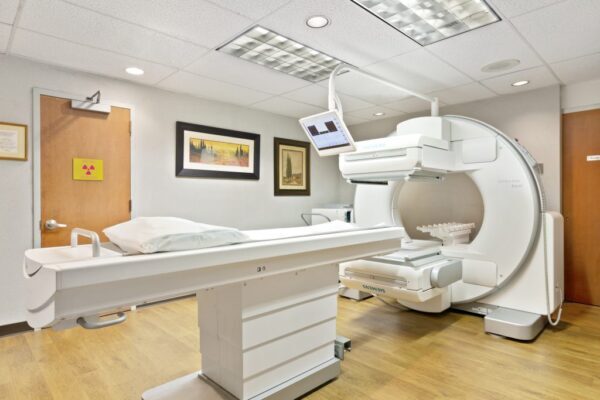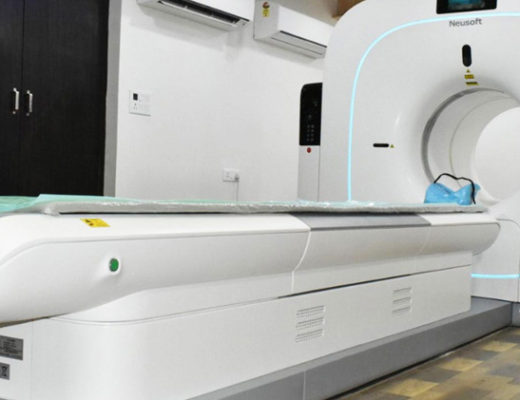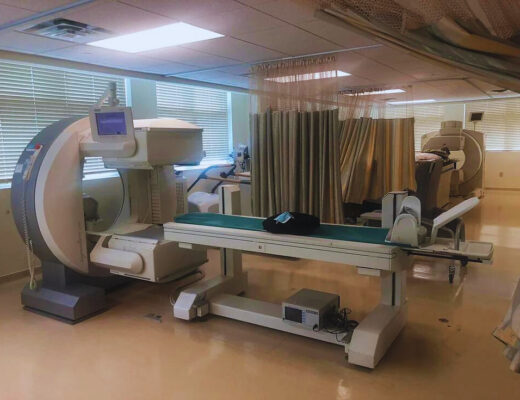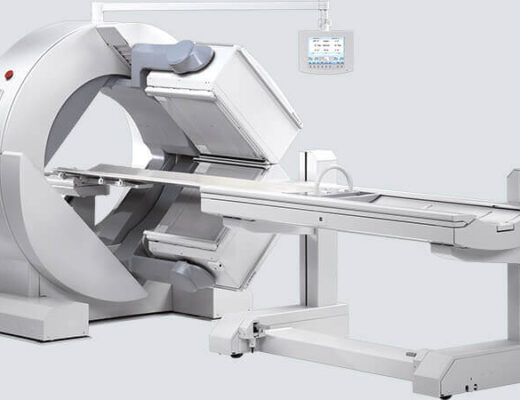You receive a radioactive tracer injection into your bloodstream before to the exam. You inject this into a vein in your hand using a tube (cannula). The tracer circles the body in two to three hours. While the scanner captures photographs, you lie down on a sofa to have the scan. The scan takes between 30 and 60 minutes. After the scan, you can go without feeling any discomfort. The tracer is eliminated by the body the following day through urine. A bone scan reveals any alterations or anomalies in the bones. It is also known as:
- a radionuclide scan
- bone scintigraphy
- nuclear medicine bone scan
A bone scan can examine a specific bone or joint. The entire body is often scanned when there is cancer. You are scanned by a sizable camera that detects radiation (called a gamma camera). In the hospital’s medical physics, nuclear medicine, or x-ray departments, you have the scan. Although the scan may take 30 to 60 minutes, you’ll spend several hours in the hospital.
Hot areas are what are referred to as alterations on the scan. Not usually are they cancer. Arthritis is just one of the causes of bone alterations. To pinpoint the precise location of these abnormal spots, you might need to get a CT scan.
Preparing for your bone scan
Before your scan, you can generally eat and drink. Unless your doctor instructs you otherwise, take your medications as usual.
If you are expecting or nursing, call the department where you are having the scan. Following the scan, you might need to temporarily cease nursing. Therefore, you might wish to preserve enough expressed milk in advance for one or two feeding. You can get advice from the department’s employees.
About 4 hours before to your scan, you must be in the hospital. The precise time will be stated in your appointment notice. In advance, let the department know if you have prostate-related issues, urgently need to pass pee, or have trouble passing urine.
The radiographer invites you to sign a consent form after explaining what will happen when you first go into the facility. Whenever something is unclear, ask them questions. A radioactive liquid known as a radionuclide or radioactive tracer is injected into you. It is injected into a vein in your arm or the back of your hand using a tiny tube called a cannula. There isn’t much radioactivity present.
After the injection, you could undergo a test scan. Nevertheless, you often have to wait two to three hours while the radioactive tracer passes through your blood and gathers in your bones.
Waiting for the scan
While you wait for your scan, the radiographer advises you to consume a lot of fluids. The radioactive tracer is spread throughout your body as a result. You can receive different advice if you have trouble urinating.
While you wait, you might be allowed to take a stroll around the hospital grounds. Alternatively, you might need to wait with others who are getting nuclear medicine testing in a different area. You might need to use designated, separate restrooms due to the radioactive tracer’s negligible radiation. Take a look at this short video about having a bone scan.
Having the bone scan
For the scan, you typically wear your own clothing, although some hospitals may require that you change into a hospital gown. Your radiographer will ask you to empty your pockets and take out any metal items, including jewellery, belts, coins, keys, and braces.
You must remain completely motionless while you pass through the scanner while lying down on a sofa. Your whole body’s bones are captured on video.
If you anticipate that this may be a challenge for you, let your radiographer know in advance. If you begin to feel confined or claustrophobic, let them know. They might provide you some comfort. The scan may take 30 to 60 minutes to complete.
After your bone scan
Soon after the scan, you ought to be allowed to go for home. Drink a lot of water the remainder of the day to aid in flushing the radioactive tracer from your system. In most cases, it takes 24 hours for your body to eliminate it through urine.
After your scan, a very little quantity of radioactive tracer is retained in your body for a brief period of time. Therefore, for the remainder of the day, limit the amount of time you spend close to expectant women, newborns, or small children.
Getting your results
You should receive the findings of your scan within one or two weeks after your scan has been examined by a specialised physician. At the time of the scan, you won’t receive any results.
You may feel worried while waiting for findings. Find out how long it will take by asking your doctor or nurse. If after a few weeks you still haven’t heard from them, get in touch with them. Perhaps you know how to reach a specialised nurse. If you want assistance or information, you may get in touch with them. It could be beneficial to express your feelings to a close friend or relative.
Also See:




